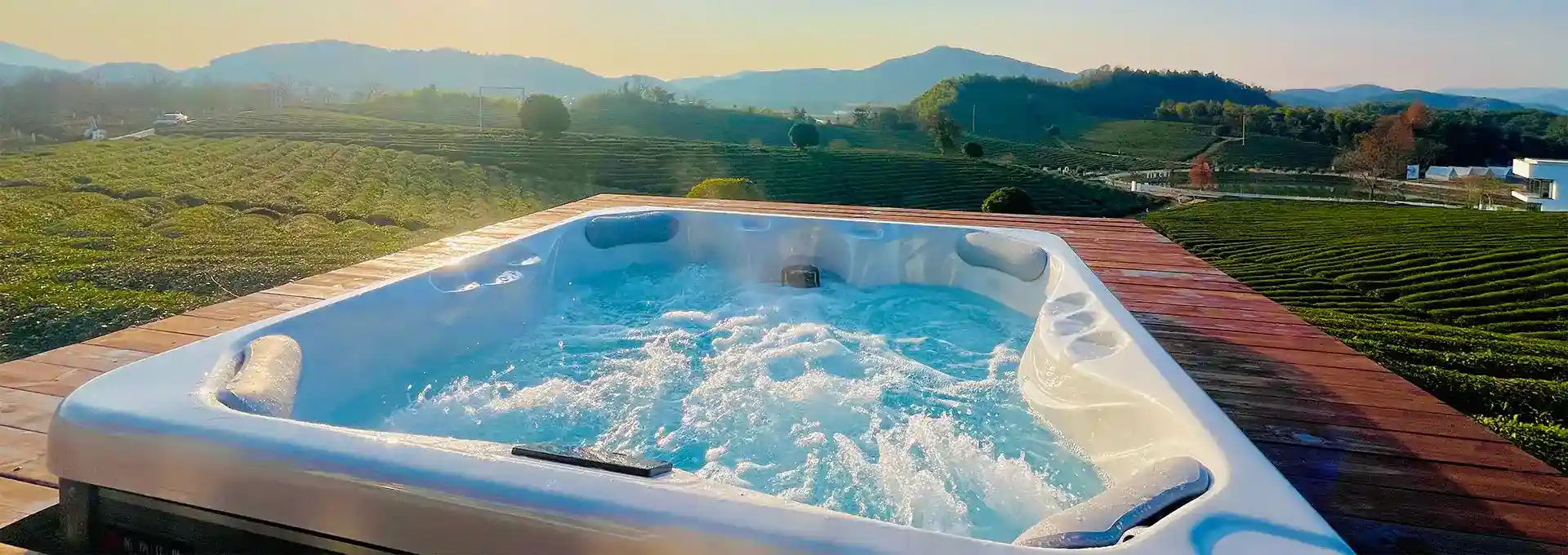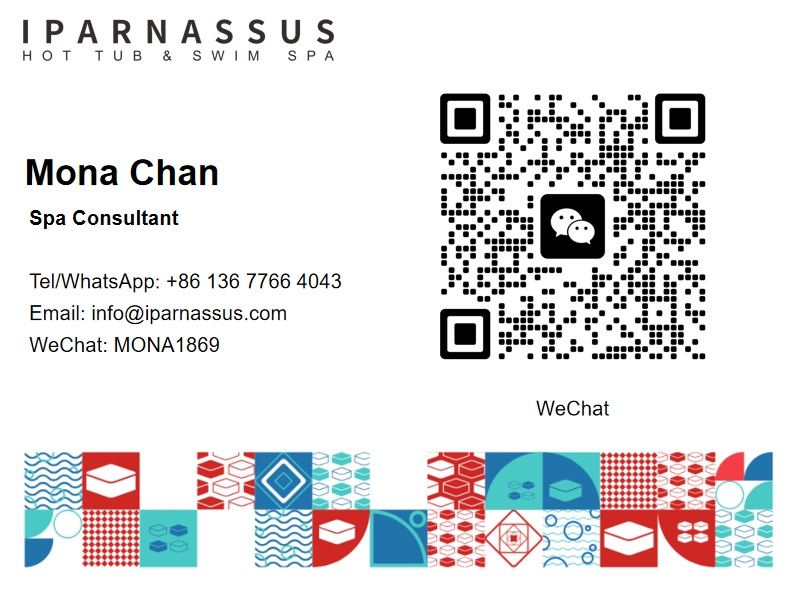Do You Need the Felt Filter with a Swim Spa?
2024-10-10 09:20:29
Swim spas have become increasingly popular for their versatility, combining the benefits of a swimming pool and a hot tub in one compact unit. As with any water-based recreational equipment, proper filtration is crucial for maintaining water quality and ensuring a safe, enjoyable experience. One component that often comes up in discussions about swim spa maintenance is the felt filter. This article will explore whether a felt filter is necessary for your 7 person swim spa, its benefits, and how it fits into the overall filtration system.
What are the benefits of a 7 person swim spa?
A 7 person swim spa offers numerous advantages for both individuals and families looking to enhance their fitness routine and relaxation time. These versatile units provide a perfect balance between a swimming pool and a hot tub, making them an excellent choice for those with limited space or who desire year-round aquatic activities.
One of the primary benefits of a 7 person swim spa is its ability to accommodate multiple users simultaneously. This makes it ideal for families or those who enjoy entertaining guests. The spacious design allows for various activities, from swimming and aqua aerobics to simply lounging and socializing.
The swim spa's adjustable current system is a standout feature, enabling users to swim in place against a controlled water flow. This provides an excellent low-impact workout that can be tailored to different fitness levels and goals. Whether you're a beginner looking to improve your stroke technique or an experienced swimmer aiming to enhance your endurance, the swim spa offers a customizable swimming experience.
In addition to swimming, a 7 person swim spa supports a wide range of water-based exercises. Aqua jogging, resistance training, and even yoga can be performed in the spa, offering a full-body workout that's gentle on the joints. The water's buoyancy reduces the impact on bones and muscles, making it an excellent option for those with arthritis or recovering from injuries.
The spa portion of these units typically includes therapeutic jets that provide targeted hydrotherapy. After a vigorous swim or workout, users can relax in the spa section, allowing the jets to massage tired muscles and promote recovery. This combination of exercise and relaxation in one unit makes the 7 person swim spa an efficient use of space and resources.
Energy efficiency is another significant advantage of swim spas. Compared to traditional swimming pools, swim spas require less water and energy to heat and maintain. Their smaller size and advanced insulation technologies contribute to lower operating costs, making them a more eco-friendly and budget-conscious choice for year-round aquatic enjoyment.
The compact nature of a 7 person swim spa also means it can be installed in spaces where a full-sized pool might not fit. This makes them suitable for smaller backyards or even indoor installations, providing the benefits of a pool without the extensive construction and maintenance requirements.
Lastly, swim spas offer year-round usability. Unlike traditional outdoor pools that may be closed during colder months, swim spas can be used throughout the year, thanks to their heating capabilities and optional enclosures. This extended usage period maximizes the value of the investment and provides continuous access to aquatic fitness and relaxation opportunities.
How often should you change the water in a 7 person swim spa?
Maintaining proper water quality is essential for the longevity of your swim spa and the health of its users. One crucial aspect of maintenance is knowing how often to change the water in your 7 person swim spa. While there's no one-size-fits-all answer, several factors influence the frequency of water changes.
Generally, for a 7 person swim spa, it's recommended to change the water every 3 to 4 months. However, this timeframe can vary depending on usage, bather load, and maintenance practices. If your swim spa sees heavy use, with multiple people using it frequently, you may need to change the water more often, possibly every 2 to 3 months.
Several factors contribute to the need for water changes:
1. Bather load: The more people use the swim spa, the more contaminants are introduced into the water. These can include sweat, oils, lotions, and other organic matter that can accumulate over time.
2. Frequency of use: A swim spa that's used daily will require more frequent water changes than one used only occasionally.
3. Maintenance routine: Regular maintenance, including proper chemical balancing and filtration, can extend the life of your spa water. However, even with diligent care, water will eventually need to be replaced.
4. Environmental factors: Outdoor swim spas may require more frequent water changes due to exposure to elements like leaves, dust, and insects.
5. Water quality: If you notice persistent cloudiness, foam, or unusual odors despite proper chemical treatment, it may be time for a water change.
To determine if it's time to change your swim spa water, consider the following signs:
- Difficulty maintaining proper chemical balance
- Persistent cloudiness or foam
- Unpleasant odors
- Algae growth
- Skin or eye irritation after use
It's important to note that while changing the water is necessary, it shouldn't be done too frequently. Excessive water changes can be wasteful and may lead to unnecessary wear on your swim spa's components. Finding the right balance is key to maintaining a healthy and enjoyable swim spa environment.
To extend the time between water changes and maintain optimal water quality, consider the following tips:
1. Implement a regular maintenance schedule, including daily, weekly, and monthly tasks.
2. Use a quality filtration system and clean or replace filters as recommended by the manufacturer.
3. Maintain proper chemical balance by testing the water regularly and adjusting as needed.
4. Encourage users to shower before entering the swim spa to reduce the introduction of contaminants.
5. Use enzyme products designed to break down organic matter in the water.
6. Consider using an ozone or UV sanitization system to supplement traditional chemical treatments.
By following these guidelines and paying attention to your swim spa's specific needs, you can ensure that your 7 person swim spa remains a clean, safe, and enjoyable environment for all users. Remember, while general recommendations provide a good starting point, the best approach is to monitor your swim spa closely and adjust your maintenance routine as needed.
What is the best way to clean a swim spa?
Maintaining a clean swim spa is crucial for ensuring a safe and enjoyable experience for all users. The best way to clean a swim spa involves a combination of regular maintenance tasks and periodic deep cleaning. By following a comprehensive cleaning routine, you can keep your swim spa in optimal condition and extend its lifespan.
Daily Maintenance:
1. Skim the surface: Use a skimmer net to remove any floating debris such as leaves, insects, or other contaminants. This simple task prevents these materials from sinking and potentially clogging the filtration system.
2. Check and maintain water chemistry: Test the water daily using test strips or a digital tester. Adjust pH, alkalinity, and sanitizer levels as needed to keep the water balanced and prevent the growth of harmful bacteria and algae.
3. Run the filtration system: Ensure that your swim spa's filtration system runs for the recommended duration each day, typically 8-12 hours, to keep the water clean and circulating.
Weekly Maintenance:
1. Clean the waterline: Use a soft cloth or sponge with a non-abrasive, swim spa-specific cleaner to wipe down the waterline. This prevents the buildup of oils, lotions, and other residues that can create a scum line.
2. Shock the water: Perform a weekly shock treatment using a non-chlorine shock or the appropriate sanitizer for your system. This helps eliminate contaminants and restores the effectiveness of your sanitizer.
3. Clean or replace filters: Depending on usage, rinse your filters weekly or bi-weekly with a garden hose. For a deeper clean, use a filter cleaning solution as recommended by the manufacturer.
Monthly Maintenance:
1. Vacuum the spa: Use a spa vacuum to remove any debris that has settled on the bottom of the swim spa. This is particularly important for outdoor units that may accumulate more debris.
2. Deep clean filters: Once a month, perform a thorough cleaning of your filters using a specialized filter cleaning solution. This helps remove deeply embedded contaminants and prolongs filter life.
3. Inspect cover and hardware: Check the 7 person swim spa cover for any signs of wear or damage. Clean it with a mild soap solution and apply a vinyl protectant if needed. Also, inspect all hardware, jets, and other components for any signs of wear or malfunction.
Quarterly Maintenance:
1. Drain and refill: Every 3-4 months, or as needed based on usage, completely drain your swim spa. This is the perfect opportunity for a deep clean.
2. Clean the shell: With the swim spa empty, use a non-abrasive cleaner specifically designed for swim spa surfaces to clean the entire shell. Pay special attention to corners, crevices, and around jets where biofilm can accumulate.
3. Flush the plumbing: Before refilling, use a line flush product to clean out the internal plumbing system. This removes biofilm and other contaminants that can build up in the pipes over time.
4. Clean and condition the cover: While the spa is empty, give the cover a thorough cleaning on both sides. Apply a vinyl conditioner to protect it from UV damage and extend its life.
5. Refill and balance: After cleaning, refill the swim spa with fresh water. Once filled, run the pumps to circulate the water and add the necessary chemicals to balance and sanitize the water.
Additional Tips for Effective Cleaning:
1. Use appropriate cleaning products: Always use cleaners specifically designed for swim spas. Household cleaners can damage the spa's surface or create foaming issues in the water.
2. Maintain proper water chemistry: Consistently balanced water is easier to keep clean and reduces the likelihood of scale buildup or staining.
3. Encourage pre-swim showers: Ask users to shower before entering the swim spa to reduce the amount of oils, lotions, and other contaminants introduced to the water.
4. Consider using enzyme products: Weekly addition of enzyme-based products can help break down organic contaminants and reduce the frequency of deep cleaning needed.
5. Invest in a good filtration system: A high-quality filtration system, possibly supplemented with UV or ozone treatment, can significantly reduce the manual cleaning required.
6. Address issues promptly: If you notice any changes in water clarity, unusual odors, or other issues, address them immediately to prevent more significant problems from developing.
By following these comprehensive cleaning guidelines, you can ensure that your 7 person swim spa remains a clean, safe, and inviting environment for exercise and relaxation. Remember, consistent maintenance is key to preventing larger issues and extending the life of your swim spa. While it may seem like a lot of work, establishing a regular cleaning routine will save time and money in the long run, and provide you with a consistently enjoyable swim spa experience.
For more information on hot tub installations and to find out more about our products, please feel free to contact us at info@iparnassus.com.
References
1. Swim University. (2023). How to Clean a Hot Tub or Swim Spa.
2. Master Spas. (2022). Swim Spa Maintenance Guide.
3. Hydropool. (2023). Swim Spa Maintenance Tips.
4. Endless Pools. (2022). Swim Spa Care and Maintenance.
5. SwimEx. (2023). How to Maintain Your Swim Spa.
6. PDC Spas. (2022). Swim Spa Water Maintenance.
7. Aqua Magazine. (2023). Best Practices for Swim Spa Maintenance.
8. Hot Spring Spas. (2023). Swim Spa Care Guide.
9. Spa Depot. (2022). Swim Spa Cleaning and Maintenance.
10. Bullfrog Spas. (2023). How to Maintain a Swim Spa.



